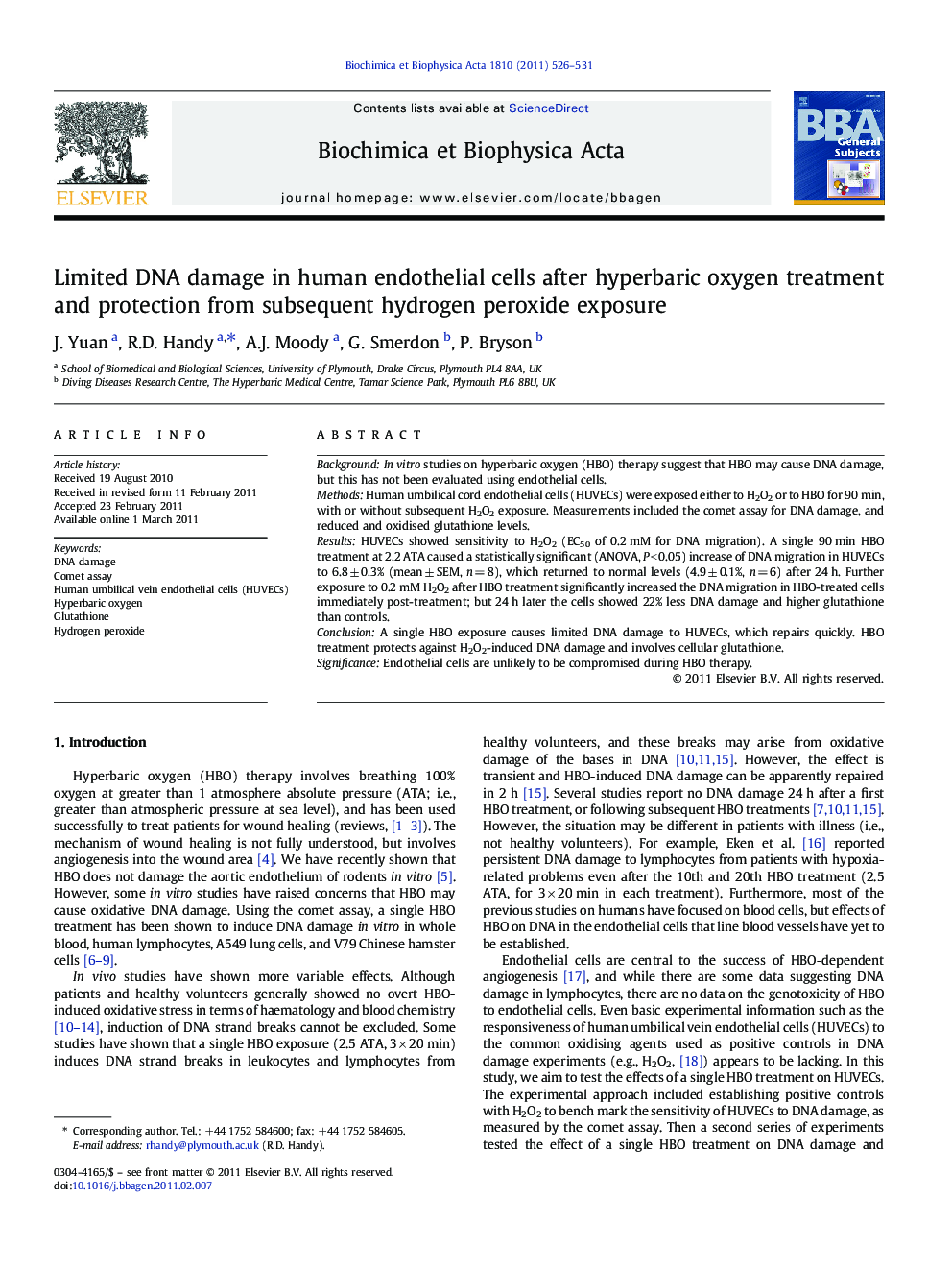| Article ID | Journal | Published Year | Pages | File Type |
|---|---|---|---|---|
| 1947843 | Biochimica et Biophysica Acta (BBA) - General Subjects | 2011 | 6 Pages |
BackgroundIn vitro studies on hyperbaric oxygen (HBO) therapy suggest that HBO may cause DNA damage, but this has not been evaluated using endothelial cells.MethodsHuman umbilical cord endothelial cells (HUVECs) were exposed either to H2O2 or to HBO for 90 min, with or without subsequent H2O2 exposure. Measurements included the comet assay for DNA damage, and reduced and oxidised glutathione levels.ResultsHUVECs showed sensitivity to H2O2 (EC50 of 0.2 mM for DNA migration). A single 90 min HBO treatment at 2.2 ATA caused a statistically significant (ANOVA, P < 0.05) increase of DNA migration in HUVECs to 6.8 ± 0.3% (mean ± SEM, n = 8), which returned to normal levels (4.9 ± 0.1%, n = 6) after 24 h. Further exposure to 0.2 mM H2O2 after HBO treatment significantly increased the DNA migration in HBO-treated cells immediately post-treatment; but 24 h later the cells showed 22% less DNA damage and higher glutathione than controls.ConclusionA single HBO exposure causes limited DNA damage to HUVECs, which repairs quickly. HBO treatment protects against H2O2-induced DNA damage and involves cellular glutathione.SignificanceEndothelial cells are unlikely to be compromised during HBO therapy.
Research Highlights► Novel use of human umbilical cord endothelial cells, HUVECs, with hyperbaric oxygen. ► HUVECs are a good model for measuring DNA damage and respond to H2O2. ► A single 90 min HBO treatment at 2.2 ATA causes limited DNA damage to HUVECs. ► Cells quickly repaired within 24 h of HBO treatment. ► HBO treatment protects HUVECs from H2O2-induced DNA damage and involves glutathione.
